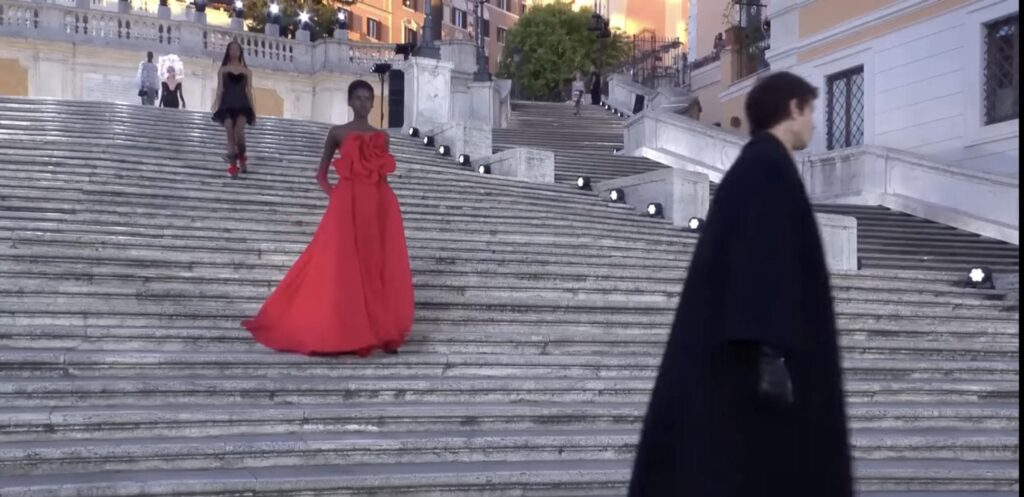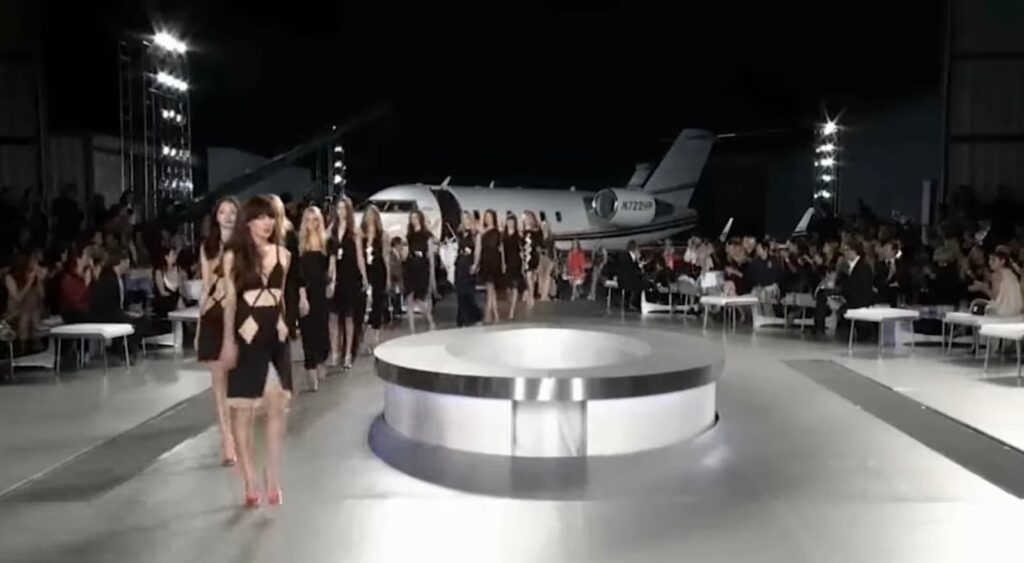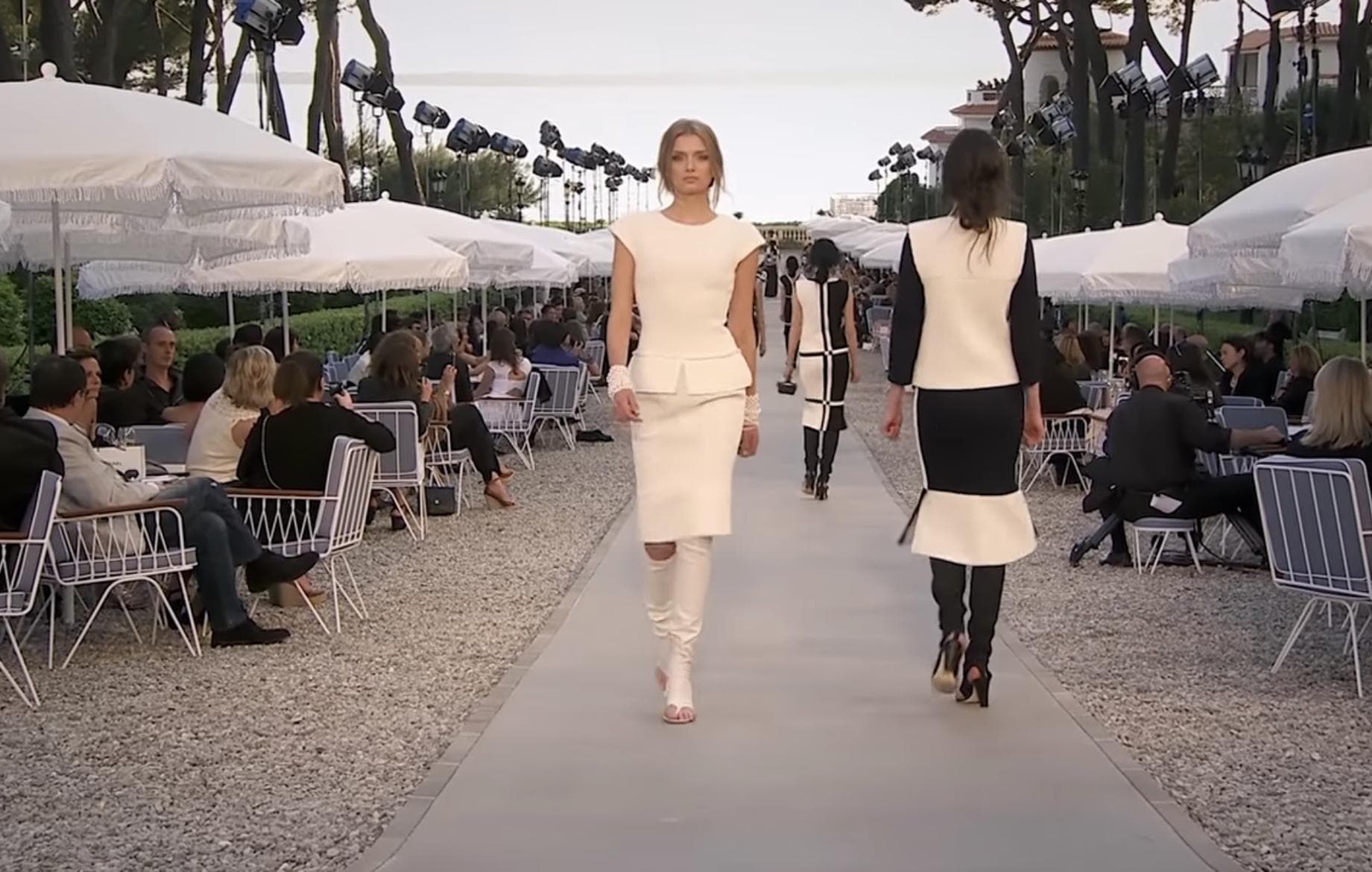As the calendar pages turn, heralding the arrival of September, the air is thick with palpable excitement. Fashion aficionados from all corners of the globe mark their diaries, preparing for the spectacle that is fashion month. This month-long sartorial celebration is an intricate dance, choreographed across the grand stages of the world’s most renowned fashion capitals.
- It kicks off in the bustling city of New York (September 8-13), where the iconic skyline becomes a backdrop for the freshest in American design innovation.
- Next, the caravan of style relocates to London (September 15-19). Here, a blend of heritage and cutting-edge creativity comes to the fore, setting the Thames aglow with fashion fervor.
- The journey then proceeds to Milan (September 19-25), Italy’s fashion heartland, where designs are infused with a distinct flair, a testament to the nation’s rich artistic heritage.
- The grand finale, the pièce de résistance, unfolds in Paris (September 25 – October 3). As the city of love and lights, Paris offers a dreamy conclusion, encapsulating the romance and magnificence of global fashion.
For designers, it’s a platform to narrate their stories; for enthusiasts, it’s a chance to be part of a tale larger than life. The fashion month is not just a showcase; it’s an experience, a global celebration of style and creativity.
Tracing the Origins of Fashion Shows
Ever wondered about the origins of these extravagant events? Dive deep into the evolution of fashion weeks across the world’s foremost fashion meccas: New York, Milan, Paris, and London.
History of Fashion Week
Amid the cobblestone streets and ornate architecture of Paris in the 1850s, the city bore witness to a revolution, not of politics or society, but of style and sophistication. This was the dawn of the haute couture era, where master tailors and dressmakers catered to the whims of the aristocracy, stitching dreams into reality. But amongst them stood a figure who was poised to redefine the industry – Charles Frederick Worth.
Worth’s genius lay not only in his impeccable designs but also in his visionary approach to showcasing them. By introducing the concept of a unified collection, displayed in a singular event, he transformed the act of fashion from mere functionality to a theatrical spectacle. These were not just clothes; they were statements, statements that communicated status, taste, and personality.
Worth’s innovation sent ripples through the fashion world. It was a precursor to the sprawling, star-studded fashion weeks that the world is familiar with today. However, the journey from Worth’s intimate salons to the flashing lights of present-day runways was gradual. For years, these events remained hush-hush, a clandestine assembly where the who’s who of society got a first look at the season’s trends.
Photographers, seen as potential agents of plagiarism, were strictly forbidden, preserving the sanctity and originality of the designs. Slowly, as the 20th century progressed, the walls of exclusivity began to crumble, making way for journalists and eventually, turning fashion shows into the global phenomena they are today.
US’s First Fashion Show
By the dawn of the 20th century, New York City, known for its vibrant culture and burgeoning industries, was eager to make its mark on the fashion world. The Ehrich Brothers, visionaries in their own right, saw an opportunity to infuse the American fashion scene with a hint of European allure. In 1903, their department store became the stage for a fashion event that was to be the talk of the town. With this, the Big Apple had its first taste of a Parisian-inspired fashion show.
The impact of this pioneering event was profound. Not only did it open the door for fashion showcases in the US, but it also set a precedent that rippled through the decades. By the roaring 1920s, the fashion show was no longer just an elitist event; it had become the most sought-after strategy for designers and stores to launch their collections.
However, New York’s interpretation of fashion shows began to diverge from its Parisian counterpart. Whereas Worth’s presentations leaned heavily on the artistry and exclusivity of his designs, post-Ehrich Brothers showcases began embracing the allure of drama and theatrics. Runways were not just about the clothes; they were about the experience, the narrative, and the spectacle. This fusion of art and theater made New York’s fashion scene distinct, setting the stage for the city’s eventual rise as a global fashion capital.
New York Fashion Week History
In the throes of the 1940s, the world was in tumult. As World War II raged on, its impact reverberated across all sectors, not least of which was the fashion industry. With Paris, long considered the heart of global haute couture, becoming inaccessible due to the war’s constraints, a void was felt in the fashion world. Enter Eleanor Lambert.
Lambert, a publicist of unparalleled foresight, sensed an opportunity amidst the crisis. Understanding the importance of a central stage for American designers to showcase their talents, she masterminded New York’s inaugural “Press Week.” This seminal event, which would later evolve into the globally celebrated New York Fashion Week, was a game-changer.
Choosing the illustrious Plaza Hotel as the venue, Lambert’s Press Week aimed primarily at the media. Unlike traditional fashion events where buyers and press mingled, Lambert’s strategy was distinctive. She prioritized journalists, ensuring that they had unfiltered access to the collections. Buyers, while not sidelined, were encouraged to set separate appointments, ensuring that designers could tailor their pitches to each audience.
The genius of Lambert’s approach was soon evident. American designers, who had previously been overshadowed by their European counterparts, suddenly found themselves thrust into the global spotlight. Claire McCardell, with her signature “American Look,” and Hattie Carnegie, known for her luxurious designs, experienced newfound acclaim. Prestigious magazines like Vogue and Harper’s Bazaar splashed their creations across their pages, heralding the dawn of a new era in fashion.
This shift marked more than just a relocation of a fashion event; it signified the rise of New York as a formidable fashion capital. With Lambert’s vision and determination, the city transformed from an observer to a trendsetter, paving the way for future generations of designers and innovators.

First Fashion Calendar
Parallel to Eleanor Lambert’s groundbreaking strides in the fashion world, another force was silently carving out her niche. Ruth Finley, who served as Lambert’s dedicated PR assistant, was both an observer and a participant in the unfolding drama of the fashion industry. With a keen ear and sharp instincts, she recognized an underlying issue that many overlooked.
It was during one of the usual hectic days that Finley overheard a conversation between two distressed writers. They were grappling with the challenge of overlapping event schedules, which not only caused personal inconvenience but also threatened the smooth coverage of key fashion events. The exchange was a revelation for Finley. Recognizing an opportunity, she decided to address this coordination chaos head-on.
The solution materialized in the form of the Fashion Calendar. More than just a schedule, this iconic pink book became an indispensable tool for industry insiders. It meticulously charted out every significant event, ensuring that clashing schedules became a relic of the past. Beyond just timelines, the calendar encapsulated the essence of each event, offering readers insights into the nature and significance of the occasions.
Finley’s brainchild quickly became the bedrock upon which fashion weeks across the globe could depend. It ensured a harmonious symphony in what could otherwise have been a cacophonic realm. Through her innovative vision, Ruth Finley not only streamlined the industry but also fortified its foundations, demonstrating the power of foresight and organization in the dynamic world of fashion.
Creation of the CFDA
The Evolution of the American Fashion Landscape
The United States, in the latter half of the 20th century, witnessed a dynamic shift in its fashion narrative. As the fashion landscape metamorphosed, certain individuals discerned the potential for growth and innovation within this space. A standout figure during this transformative era was Eleanor Lambert. With a vision for a united fashion industry, she founded the Council of Fashion Designers of America (CFDA) in 1962. This initiative served as a platform for American designers, giving them a collective voice and fostering collaboration.
By the time the 1990s rolled around, fashion shows in the US had evolved from modest showcases into grand spectacles, drawing attention from far and wide. However, this expansion wasn’t without its challenges. Navigating the logistics of disparate show locations became increasingly cumbersome. Enter Fern Mallis, whose innovative solution was to centralize these shows. The establishment of the “7th on Sixth” event at Bryant Park marked a pivotal moment, streamlining operations and making the shows more accessible.
This new centralized venue ushered in a new era, attracting a broader audience. Celebrities, previously mere spectators from afar, started frequenting these events, amplifying their glamour quotient. Furthermore, this shift in venue and the event’s growing stature caught the eye of corporate entities, leading to significant sponsorships. By the close of the 1990s, this evolution culminated in a rebranding exercise, with New York Fashion Week donning a new moniker: Mercedes-Benz Fashion Week. The transformation signified not just a name change but the fusion of high-end fashion with corporate prestige.
Milan’s Ascent in the Fashion World
Before the rise of Milan as the Italian fashion capital, Florence was the epicenter of haute couture. It was only in 1958 that Milan, the heartland of Italian style, made its mark on the international fashion scene. Florence, during its heyday, showcased eminent designers, including the iconic Emilio Pucci. However, as the event’s magnetism grew, managing the burgeoning crowds and logistics in Florence became increasingly complex.
The overwhelming demand and logistical challenges nudged the decision-makers to transition the fashion hotspot from Florence to Milan. This strategic move not only addressed the logistical concerns but also provided a larger stage for designers to showcase their creations. The ensuing decades, particularly the 70s and 80s, marked a golden era for Milanese fashion. Eminent designers, including the likes of Giorgio Armani, emerged during this period, amplifying Milan’s global reputation. Their unique designs, combined with Milan’s historical and cultural richness, made it an irresistible hub for fashion aficionados worldwide. This evolution transformed Milan into a powerhouse, seamlessly integrating the city’s historical charm with contemporary fashion trends.
Paris Fashion Week History
Paris, often dubbed the “Fashion Capital of the World,” boasts a rich tapestry of sartorial history, even if it wasn’t the origin of the fashion week concept. The essence of Paris lies in its Haute Couture tradition, a term legally protected in France and given only to those fashion houses meeting stringent criteria. The inception of Haute Couture week in 1945 elevated Paris’s status, highlighting its unparalleled expertise in the realm of custom-made fashion.
1973 was a defining year for Parisian fashion. Under the watchful eyes of Eleanor Lambert, the city experienced its first coordinated fashion week, solidifying its reputation on the global stage. This week was marked by the legendary “Battle of Versailles,” a playful competition that saw leading French designers, including Hubert de Givenchy and Pierre Cardin, squaring off against their American counterparts, such as Oscar de la Renta and Halston.
Over the decades, Paris has been the backdrop to revolutionary moments in fashion history. Christian Dior’s transformative “New Look” in 1947 redefined post-war fashion, setting new standards for elegance and femininity. On the other end of the spectrum, Thierry Mugler’s audacious 1984 presentation broke conventions, welcoming the public into the usually exclusive world of high fashion. Legends like Yves Saint Laurent, with his revolutionary tuxedo jacket for women, and Jean Paul Gaultier, known for his avant-garde designs, have further enriched the Parisian fashion story, making the city an enduring epicenter of style and innovation.
The Evolution of London Fashion Week
The evolution of London Fashion Week has been nothing short of dynamic, with numerous personalities claiming to have played an instrumental role in its conception. Percy Savage, the esteemed fashion PR maestro, is one such figure who asserted his mark through groundbreaking showcases like “The New Wave” at The Ritz. However, the official accolade for breathing life into this iconic event goes to the British Fashion Council, which in 1983 established London Fashion Week as an institutional pillar in the fashion calendar.
One year later, in 1984, the Council further enhanced the event’s prestige by launching the Designer of the Year Award, which was impressively snatched up by the gifted Katharine Hamnett. The unconventional choice of a West London car park as the venue provided a raw, urban edge, juxtaposed with the elegance of tents pitched near the illustrious Kensington’s Commonwealth Institute. This setting became the launching pad for emerging talents like Betty Jackson, David Fielden, and the iconic John Galliano.
The inaugural event’s triumph was so pronounced that it not only captivated the attention of the UK government but also secured their financial commitment. In an era where fashion was gaining momentum, even royalty couldn’t resist its charm. Princess Diana’s patronage further uplifted the event, with receptions honoring designers. Surprisingly, the realm of politics intertwined with fashion when in 1986, Prime Minister Margaret Thatcher, in an unprecedented move, immersed herself in a week-long celebration of British fashion at its finest.
Challenges & Triumphs: The London Fashion Landscape in the 90s
As the golden era of the ’80s came to a close, London’s vibrant fashion scene faced the brunt of the ’90s economic downturn. The opulence and splendor of the previous decade faded, giving way to a mounting recession. By the dawn of 1992, the once-bustling London Fashion Week had been reduced to a mere handful of designers, with The Ritz being one of the few venues echoing the previous grandeur. However, the ’90s were not without their silver linings.
In a twist of fate, 1993 became a landmark year when the enigmatic Alexander McQueen graced the London Fashion Week stage for the first time, leaving an indelible mark on the industry. Two years later, in 1995, Stella McCartney added her name to the roster of emerging talents making waves on the British fashion circuit.
Witnessing the industry’s struggles and the potential of its emerging talents, the British Fashion Council took decisive action. With a vision to foster and support the next generation of designers, they rolled out the NEWGEN initiative. This groundbreaking program was more than just a lifeline; it was a launchpad that provided up-and-coming designers with not only the financial backing they sorely needed but also the mentorship and guidance to navigate the complex world of fashion.

The Contemporary Fashion Week Landscape
While fashion weeks dot the global calendar, the crown jewels remain the quartet of New York, London, Milan, and Paris. The relay starts in New York and passes the baton to London, with Milan taking the third leg and Paris bringing it to a grand close.
Today, Fashion Week graces the fashion capitals bi-annually. February ushers in the Fall/Winter collections, while September unveils the Spring/Summer ensembles. Interspersed are Men’s Fashion Weeks in January and June, along with specialized collections like Resort/Cruise and Pre-Fall. The fashion world’s diversity extends to locations as well: Paris typically hosts haute couture while New York is the hub for bridal extravaganzas.
In the current era, boundaries are being redefined. Designers continually innovate with venue choices to make their mark. Modern fashion shows transcend mere collection displays. They’ve evolved into holistic experiences, complete with after-parties, digital streams, and immersive brand showcases, pushing the boundaries of what’s possible in the realm of fashion.
To wrap up
As the tapestry of fashion weeks across the globe continues to evolve, it’s essential to appreciate the rich historical tapestries from which they have been woven. From the illustrious streets of Paris, the birthplace of haute couture, to the bustling energy of New York’s modern runways, the journey of fashion weeks is as varied as the designs they showcase. London’s resilience amidst economic challenges and Milan’s transition from Florence’s shadow epitomize the industry’s dynamic nature.
Fashion weeks, regardless of their location, serve as a reflection of societal changes, technological advancements, and artistic evolution. They have transcended beyond just the unveiling of new collections; they have become a cultural phenomenon. The symbiotic relationship between designers and their audience, forged through decades of interaction, is evident during these events. From exclusive, intimate showcases to grand public spectacles streamed across the world, the progression is a testament to the industry’s adaptability and innovation.
But as we stand at the cusp of a new era in fashion, where sustainability, inclusivity, and digital transformation take center stage, it becomes crucial to remember and honor the pioneers, the trendsetters, and the visionaries. Figures like Eleanor Lambert, Charles Frederick Worth, and many others paved the way for contemporary designers, ensuring that fashion remained not just an industry but an art form, a statement, and a revolution.
In conclusion, the history of fashion weeks serves as a reminder that creativity thrives amidst challenges, that evolution is inevitable, and that the essence of fashion lies not just in the garments but in the stories they tell and the memories they create. As we look forward to future fashion weeks, may we always cherish the rich legacy upon which they stand.







